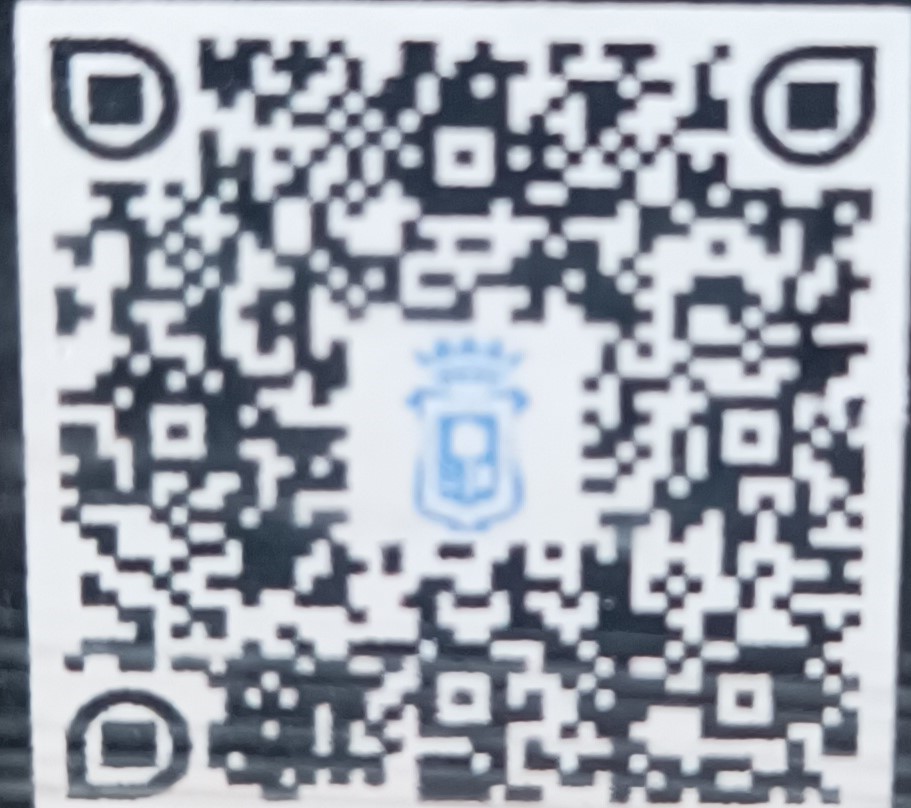Communicators Walk
A sculptural space dedicated to the memory and tribute of
communicators born in Huelva
The Paseo de los Comunicadores is a space located outside the Jesús Hermida Communication Center, right next to the end of the railway line that transported ore from the Mining Basin of Huelva to the Riotinto Dock, where it was unloaded onto ships.
This sculptural space is dedicated to the remembrance and tribute of figures in journalism and communication born in the province of Huelva who have been a reference for their contribution to the profession. A bust of each of them is placed on a pedestal, with a plaque highlighting this recognition and including a QR code that allows visitors to download and read information about their biography. This is a way for the City Council of Huelva to fulfill its commitment to highlight the pioneering role that Huelva has historically played in the evolution of the media and the history of journalism.
So far, three names have been honored with this tribute: José Ponce Bernal, Víctor Márquez Reviriego, and Jesús Quintero, with all the works created by the sculptor Alberto Germán Franco.
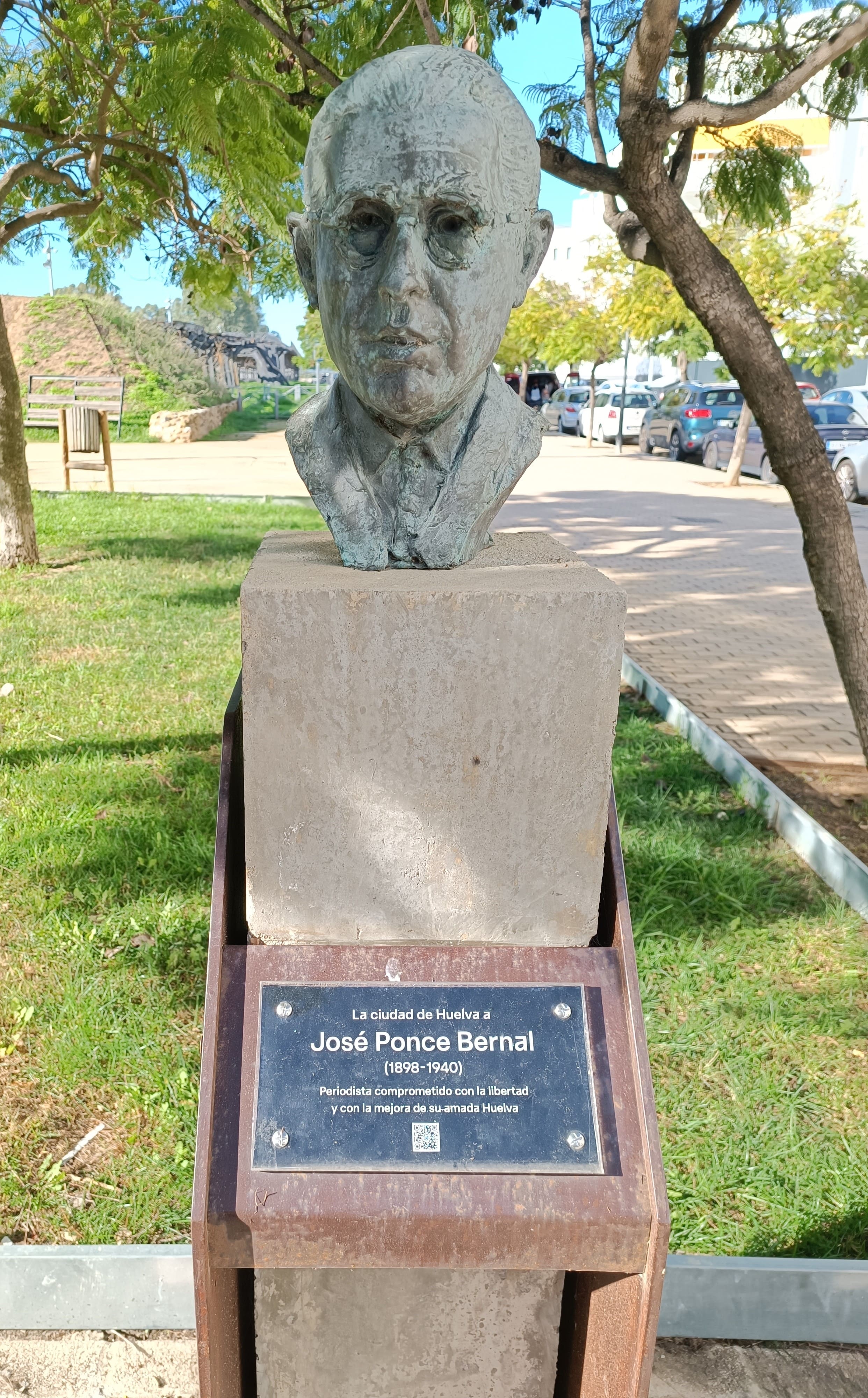
José Ponce Bernal
The bust of José Ponce Bernal, funded by the journalist's own family, was inaugurated on June 15, 2021, to do justice to a journalist, intellectual, and politician "committed to his time, who gave his life for his ideas, a staunch defender of the rights of journalists and the free exercise of the profession."
His figure has been recovered thanks to the research carried out by his granddaughter, Felicidad Mendoza, who, in a doctoral thesis rated summa cum laude and awarded a special doctoral prize at the Complutense University of Madrid, delved into the biography of this journalist born in Huelva in 1898 and died in Madrid in 1940. He also stood out as an intellectual and politician in the first third of the 20th century, particularly interested in art, culture, education, and the social challenges of the time.
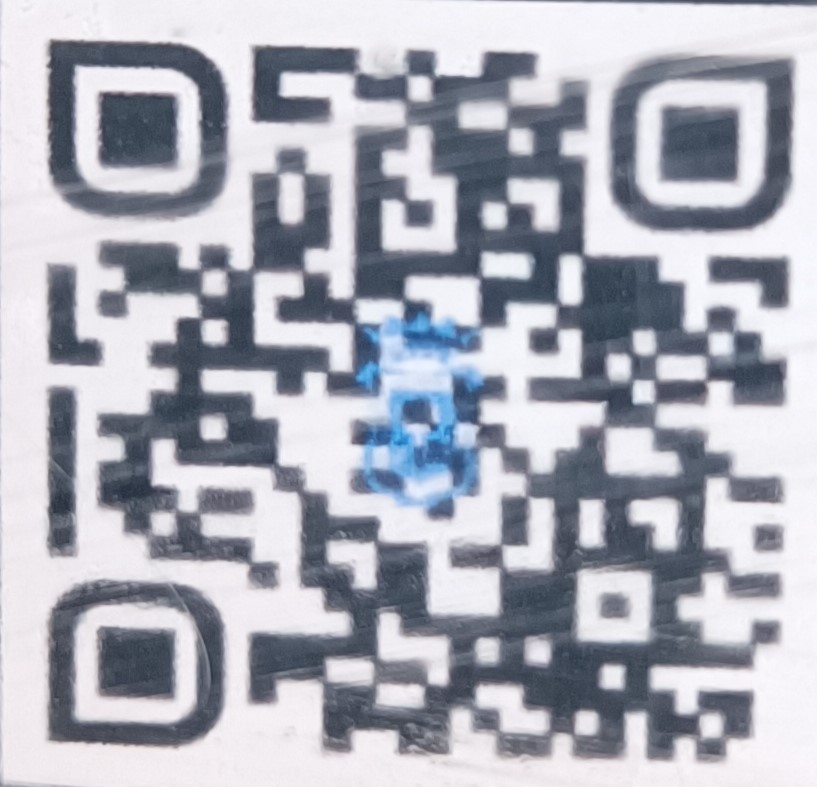
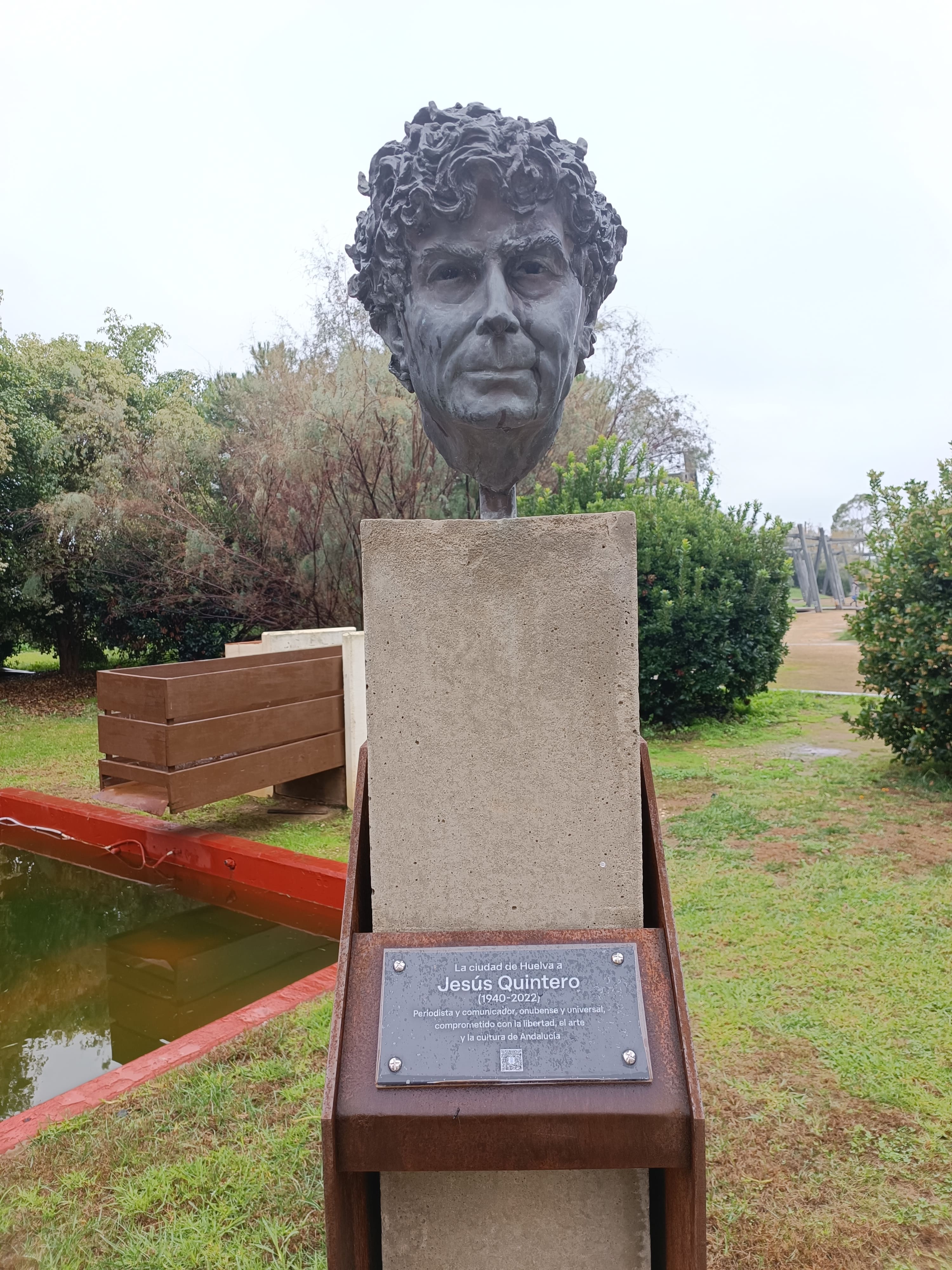
Jesús Quintero
On February 21, 2023, in the presence of his widow, María Indiano, and Andrea, one of his daughters, the bust dedicated to Jesús Quintero is unveiled. Born in San Juan del Puerto (Huelva) in 1940 and deceased in Ubrique (Cádiz) in 2022, Huelva aims to preserve the memory of one of Spain's best communicators and pay him a "perpetual tribute... anchoring him even more to the land of which he always boasted and of which he was one of its greatest ambassadors."
Jesús Quintero began his professional career in this city at Radio Popular (COPE) and Radio Nacional de España (RNE), where he started a career that led him to become one of the greats of contemporary journalism, a master of interviews, creating a unique and unrepeatable style in radio and television.
Health issues prevented Jesús Quintero from inaugurating the bust himself in the last stage of his life. Numerous awards have recognized his quality as a communicator, highlighting titles such as "El Loco de la Colina," "El perro verde," "Cuerda de presos," and "Vagamundo," among many others. In his hometown, San Juan del Puerto, he worked in the last years of his life to create a Center-Museum where his work could be preserved, and activities related to communication and culture could take place.
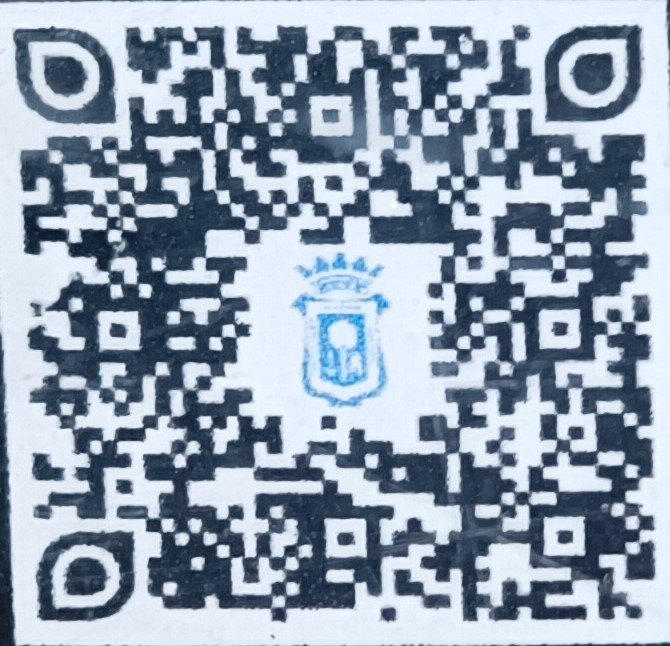
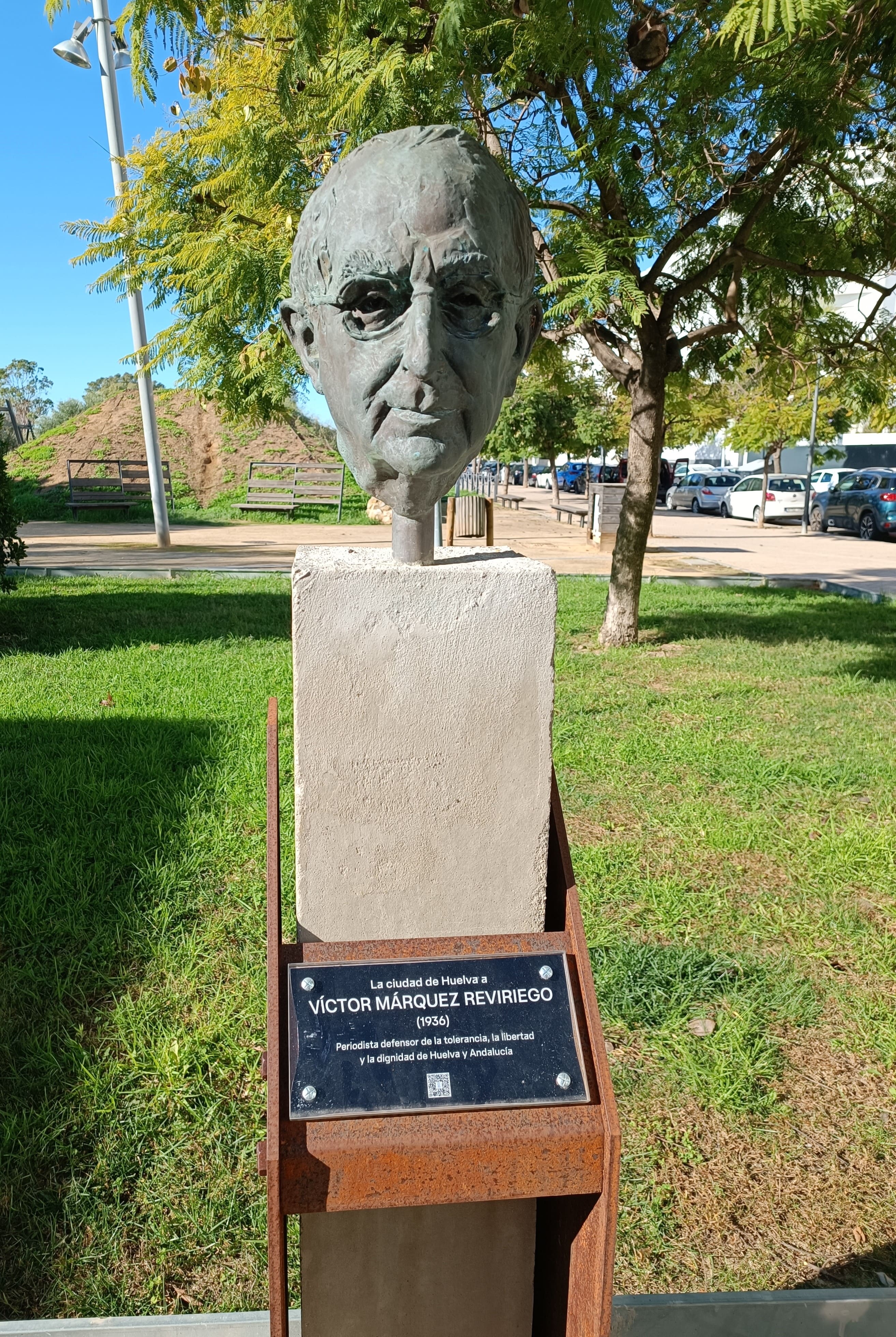
Víctor Márquez Revirigo
On March 24, 2023, the bust of Víctor Márquez Revirigo was unveiled. Born in Villanueva de los Castillejos in 1936, he was delivered in Huelva in the clinic of Dr. José Población. He is recognized as one of the most important parliamentary journalists in Spain, starting his professional career in 1962 at the Odiel newspaper. He held various positions, including editor-in-chief of Triunfo magazine and deputy director of Cambio 16. He received distinctions such as an honorary doctorate from the University of Huelva, medals from this capital and Andalusia, and the National Journalism Award.
The journalist himself, currently residing in Madrid, attended the inauguration at the age of 87. In conjunction with the unveiling of the bust, an exhibition titled "VÍCTOR MÁRQUEZ REVIRIEGO. MEMORY, LITERATURE, AND JOURNALISM" was also inaugurated in the Multipurpose Room of the Jesús Hermida Communication Center. The exhibition allowed attendees to learn about the life of the author, a witness to significant political and cultural events in our country from 1962 to the present day. It featured documents, texts, and photographs, including all his books and copies of magazines such as Triunfo, Tiempo de Historia, Cambio16, and Leer, as well as some personal items. The exhibition included texts about his work, with articles by Álvaro Pombo, Delgado Gal, Antonio Prieto, José Antonio Gómez Marín, Gregorio Morán, César Alonso de los Ríos, Jaime García Añoveros, Manuel Barrios, Francisco Umbral, Eduardo Haro Tecglen, among others, and a collection of photographs from the journalist's personal archive.
